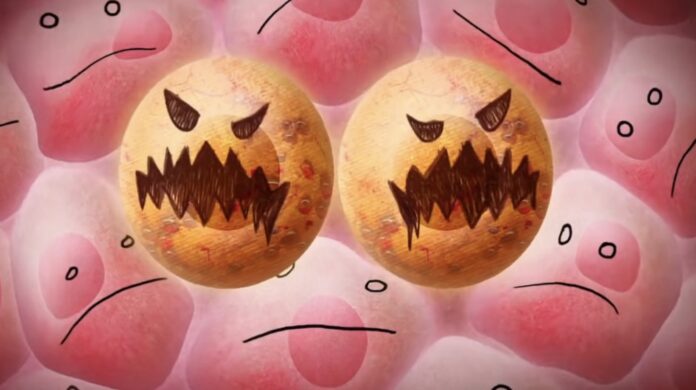The Role of Intracellular Signals
Essentially, these signals work as the body’s internal communication system. They direct our immune cells to potential threats, flagging foreign invaders like bacteria, viruses, and fungi. It’s the call to arms in our internal battlefield, rallying our defense forces and initiating the response to counteract these foreign entities.
Through this crucial mechanism, our bodies can detect and react to a wide range of threats, sustaining our health and wellbeing. That’s why understanding intracellular signaling is of utmost importance. A malfunction in these signals could lead to an impaired immune response, possibly resulting in diseases and infections slipping past our body’s defenses.
Types of Intracellular Signals
Intracellular signals aren’t all the same. They differ in nature and the type of response they initiate.
For starters, there’s the autocrine signaling where cells respond to the signals they produce themselves. A classic example of this would be our T-cells. Once activated, these cells produce a baseball team’s worth of signals that help amplify the response to the invader.
Moving on, we have paracrine signaling where the signals affect nearby cells. This is commonly seen in wound healing. The injured cells release signals causing nearby cells to multiply and regenerate tissue.
Lastly, we have endocrine signaling where signals travel via the bloodstream to affect cells in distant parts of the body. This is seen in our hormonal responses like insulin signaling in response to elevated blood sugar levels.
Each type of signaling plays its part in our immune response, acting at different moments and targeting various aspects of the defense mechanism. Through this complex network of signals, our body detects, fights, and recovers from potential health threats.
As we further our understanding of these signals and their function in the immune system, we can enhance our approach to health, disease, and treatment. It’s yet another reminder that knowledge is our best defense.

The Act as Intracellular Signals to Begin the Immune Response.
Understanding how intracellular signals activate our immune response is crucial in overcoming challenges in health and disease management.
Recognition of Pathogens
Before our immune system can react to a threat, it must first recognize that a pathogen is present. This recognition typically takes place at the cellular level, with our immune cells using specialized receptors to identify harmful foreign substances. These receptors may recognize pathogen-associated molecular patterns (PAMPs) or damage-associated molecular patterns (DAMPs).
Foreign substances don’t go unnoticed. Our immune cell receptors are always alert, scanning our body for signs of potential threats. Once recognized, these harmful molecules trigger a cascade of intracellular signals that initiate the immune response.
Initiation of Intracellular Signaling
Intracellular signaling isn’t a linear process. It’s akin to a relay race, where batons – in this case, signals – are passed from one protein or molecule to another. Activated by foreign substances, these signals travel inside immune cells and through multiple cellular pathways, ensuring that the message of a potential threat is communicated efficiently.
Different types of intracellular signaling exist – autocrine signaling, where cells respond to substances that they themselves secrete; paracrine signaling, where the signal is passed to nearby cells; and endocrine signaling, which sends signals through the bloodstream to distant cells. Each form of signaling has a role in initiating the immune response.
Activation of Immune Cells
With signaling underway, our immune cells swing into action. The signals activate the immune cells, stimulating them to produce chemical substances such as cytokines and chemokines that amplify the immune response.
Individually, our immune cells may not seem like much. But when they’re activated and working in concert, they form a formidable defense against pathogens. Cells like neutrophils, macrophages, and T cells engulf invaders, destroy infected cells, and help us regain our health.
Unlocking the secrets of intracellular signaling and immune response activation doesn’t just promise to advance our understanding of our body’s inner workings. It paves the way for innovative treatments that enhance our health, prevent disease, and guide our body’s defense against pathogens.
Undoubtedly, there’s still much to learn. But we’re committed to the journey, even as we uncover the intricate landscape of the immune response. So, let’s keep exploring, diving deeper into the world of intracellular signaling and immune defense mechanisms.


